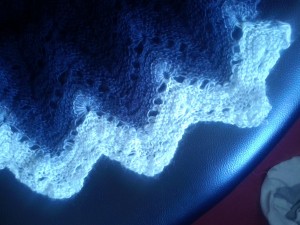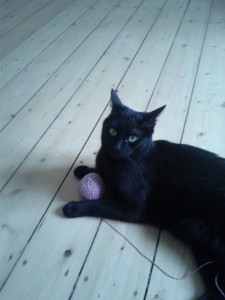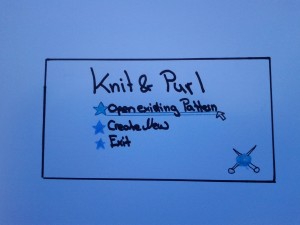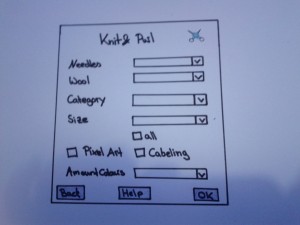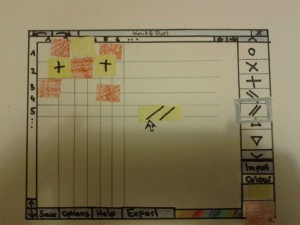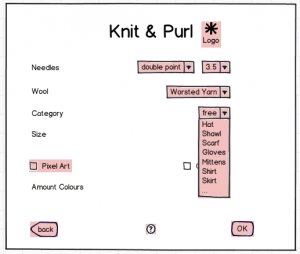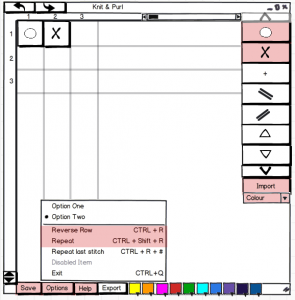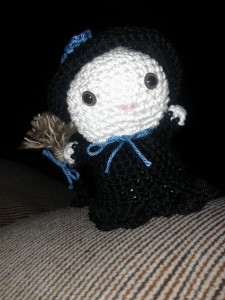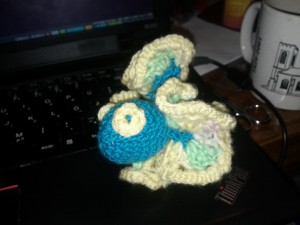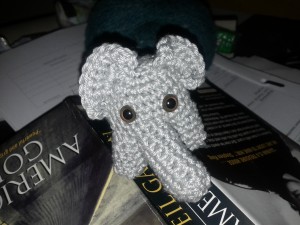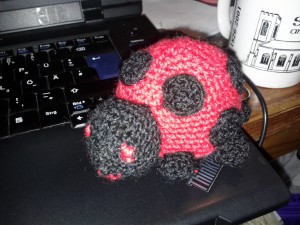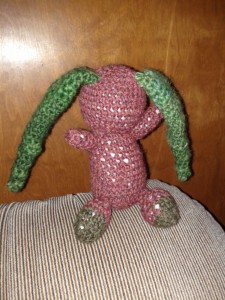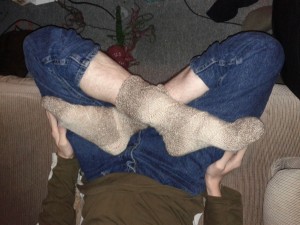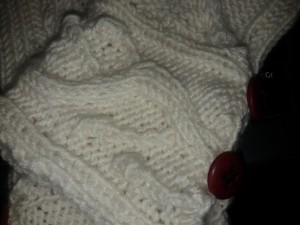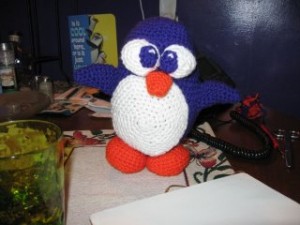I figured, since it is a pattern of my own anyway, here for others to make the pattern of the frog button. It’s a free pattern and you can use it whenever you want and modify and whatever. Note though, that these are used as a political campaign material by the Green candidate for the mayoral elections in Weimar.

You will need:
- some green, pink and white wool. (I use wool, that is specifically designed to make puppets out of them.)
- a 1.5 mm crochet hook
- a sewing needle
- a tiny amount of stuffing (or scrap yarn, but I find that more complicated to deal with at this size)
- a small safety pin
Head top (make 1, uses green wool):
crochet a chain of 2.
round 1: crochet 6 stitches into second stitch from hook
round 2: crochet 2 in each stitch (12)
round 3: crochet 2 in the first stitch and one in the next, repeat for round (18)
round 4: crochet 2 in the first stitch and one in the two next, repeat for round (24)
round 5: crochet one in all stitches (24), fasten off.
Inner mouth (make 2, uses pink wool):
crochet rounds 1-4 of head top. fasten off.
Chin ( make 1, uses white wool):
crochet like head top, fasten off.
Legs & feet (make 1, uses green wool):
crochet a chain of desirable length (I usually do 16 to 20 stitches plus 1 to turn).
crochet down the chain.
crochet a chain of five where you finished, slip with the end of legs. (do this three times on either side) and fasten off.
Assembly:
Put a tiny amount of stuffing in the top head and sew one inner mouth onto it.
Don’t put any stuffing in the chin, sew the other inner mouth onto it.
Sew those together in the back of the head (which you define on your own), about half way through, so the frog has an open mouth.
Sew legs in the middle of chin.
Add a safety pin.
Enjoy!



